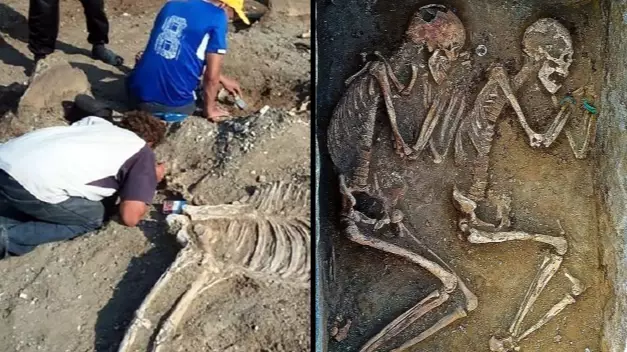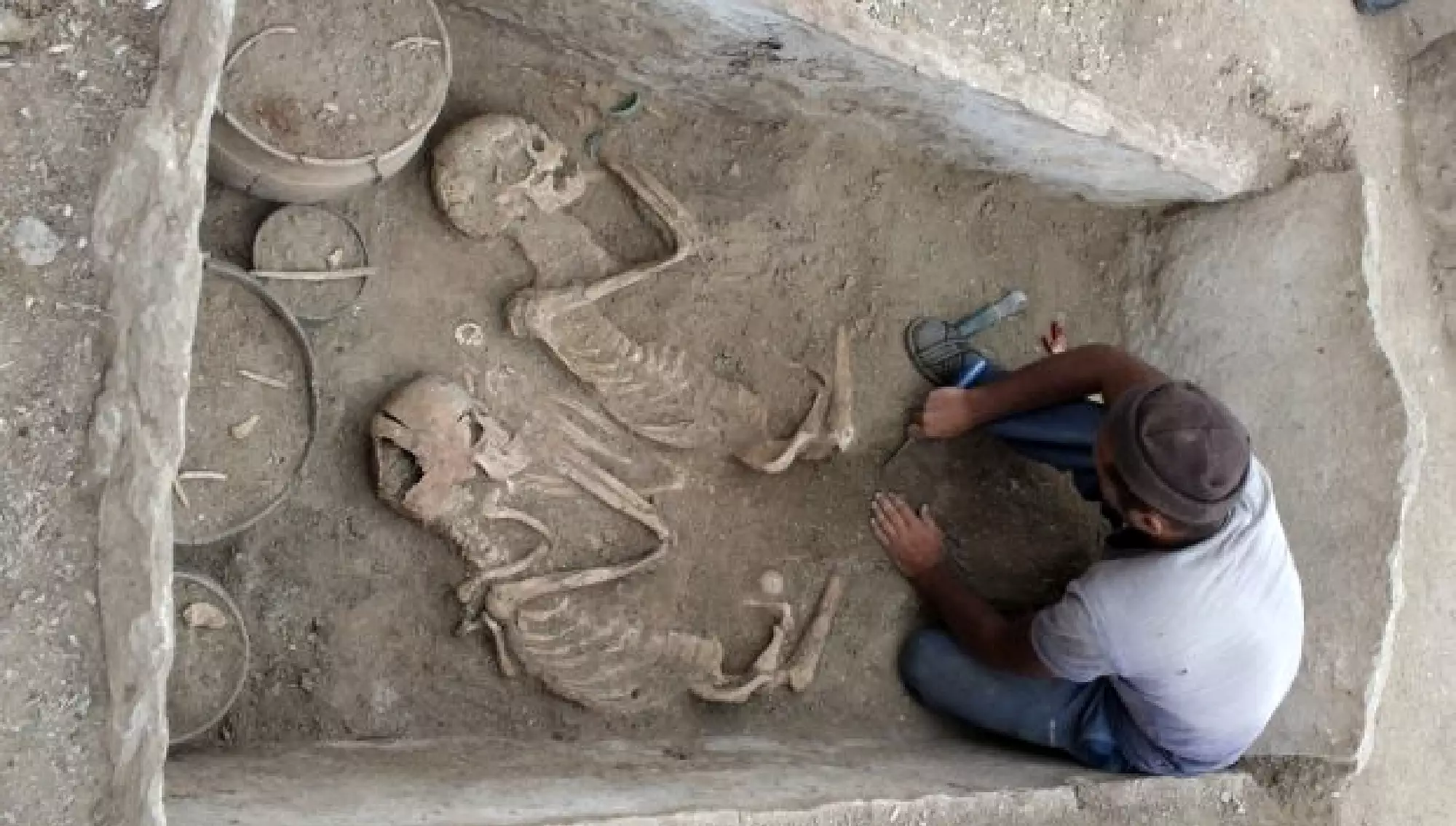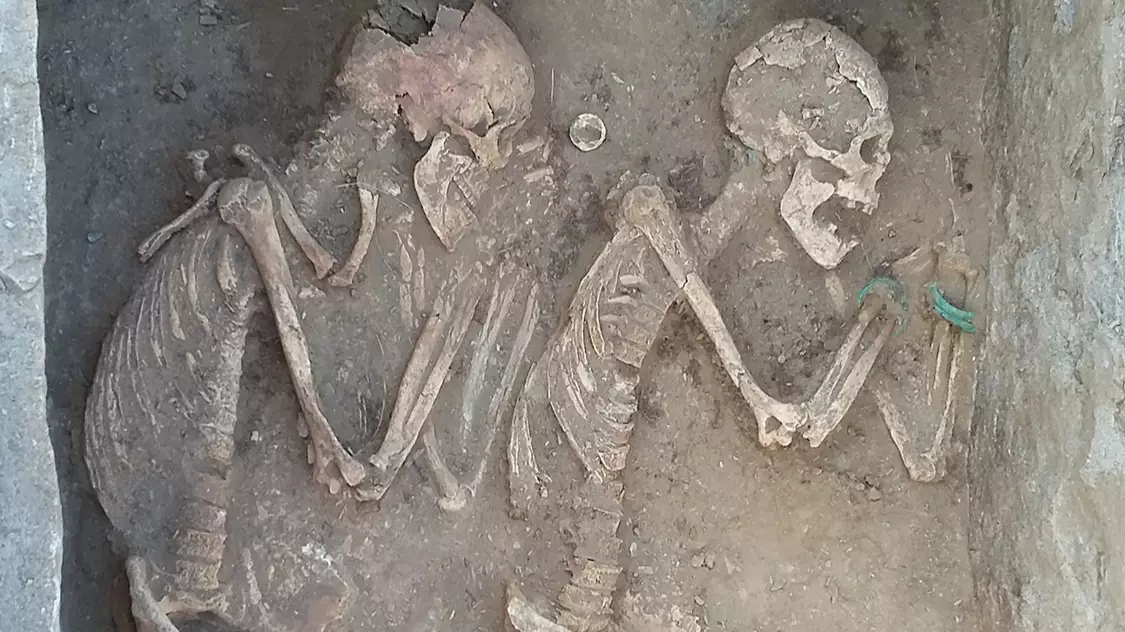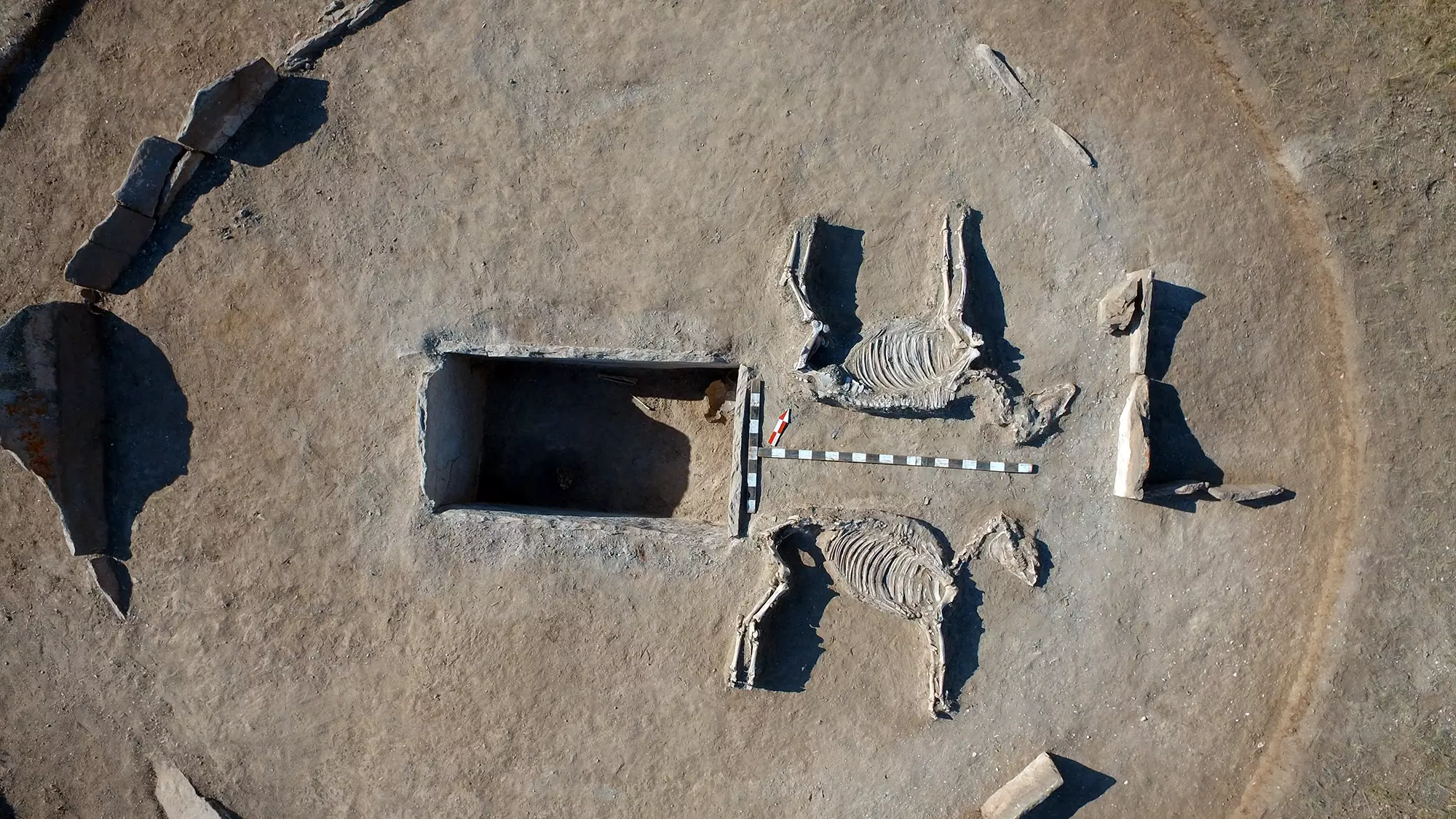
Archaeologists in Kazakhstan have uncovered an astounding discovery that is thought to date back over 5,000 years.
Scientists in the Central Asian country found a grave that housed what has been described as 'a Romeo & Juliet couple' with two sacrificed horses pulling a 'chariot' into the afterlife.

Advert
The grave is surrounded by standing stones and is largely intact, despite the passage of time.
"Such coupled burials are not a rarity in our area, but the question of how the second person joined the deceased is still very much in the air," said Dr Igor Kukushkin, the archaeologist in charge of the excavation.
"Was the woman - or the man - killed to make sure they 'followed' their other half? Was this man and woman a husband and wife?
"Or was the couple made of a man and a woman who were not related, but died around the same time?
Advert

"Our initial research on these skeletons showed no visible harm done to the people, but more detailed work should help clarify the cause of their deaths."
Of the horses, Kukushkin said "We can be pretty certain that both horses were killed. The horses lie on their sides, back to back.
"This is a rare position which is very similar - almost identical - to famous rock drawings of chariots."
Advert
According to the archaeologists, the position of the horses in relation to the human remains shows no doubt that they were left deliberately to evoke the idea that they were in a chariot.

Viktor Novozhenov, from Karaganda State University in Kazakhstan, added: "The position of the horses and of the stone burial box clearly show a burial made in a shape of a chariot.
"Next to the chariot the archeologists found a (separate) burial of 'Romeo and Juliet'. The man was buried with a quiver set and a metal dagger, and a woman's last costume had bracelets made of semiprecious stone."
Advert
The woman was wearing a bronze and semiprecious stone necklace and pendants, while the horses also included psalia, a remnant of their harnesses.
WATCH: Skeletons of WW1 soldiers discovered in excavated former trenches
"Such psalia laid on both sides of horses heads in their working position, linked between themselves and a harness by leather belts," said Novozhenov.
Advert
"Preserved bronze staples must have strengthened leather and formed part of a bit.
"Such a rare find of such important details of chariot harness in situ in its initial position, unbothered by grave robbers for 5,000 years is great luck for researchers."
Featured Image Credit: East2West NewsTopics: World News, History